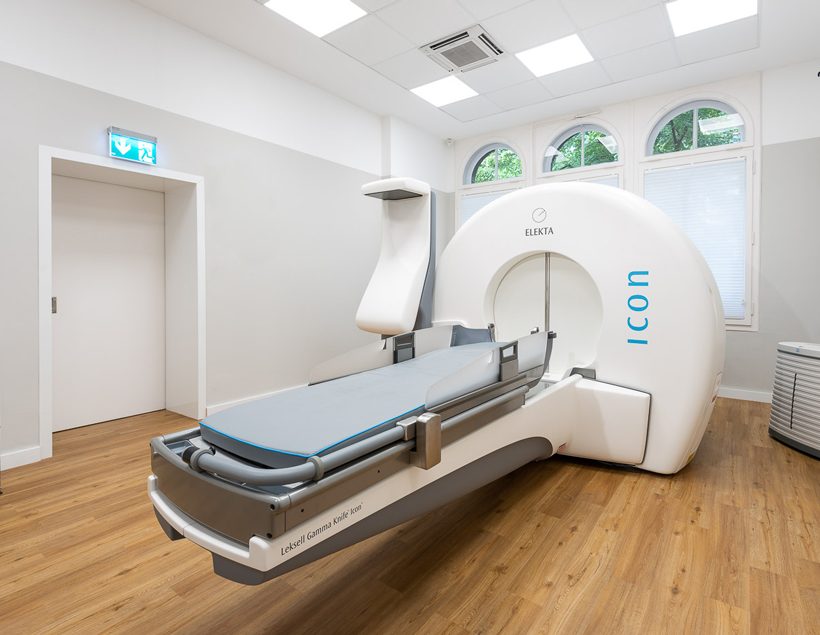Even though the pituitary tumor has already been surgically removed, you are diagnosed with a recurrent tumor – meaning the pituitary adenoma has returned? Or a follow-up examination found that you still have a residual tumor after the operation?
In both cases radiosurgical treatment with the Gamma Knife is the best solution for you. The therapy offers numerous advantages over conventional surgery for you as a patient:
1. No surgical risks
No risks associated with full anesthesia, bleeding complications, or even infections, etc., which may occur during surgery.
2. Few side effects
Due to the very steep dose gradient with the Gamma Knife, the side effects on the surrounding brain are reduced. Similar to how a magnifying glass makes the sun’s rays much stronger, 192 low-dose cobalt 60 beams are converged during treatment at a single point with submillimeter accuracy.
3. Less strain on the body
Following radiosurgery with the Gamma Knife, patients can normally restart strenuous, physical activities such as work within two days. Following conventional surgery on a pituitary adenoma the patient must avoid any strenuous, physical activities for between 3 and 6 weeks.
4. No hospital stay
There is normally no need for a hospital stay. Exceptions occur whenever the patient requires in-hospital care and monitoring due to comorbidity. In such cases, the radiosurgery can also be performed in a hospital.
Aim of treatment with the Gamma Knife
The aim of any radiosurgery with the Gamma Knife is to prevent the tumor from growing further. This goal is achieved in over 90% of cases with a single treatment.
With hormone active pituitary adenomas a secondary aim is to normalize raised hormone production. Statistically this is achieved in almost 70% of cases with Cushing syndrome patients. For patients with prolactinoma in approx. 60% of cases and for patients with acromegalia in around half of all cases. Side effects (impaired vision, double vision, etc.) are reported in less than 3–5% of cases. Around 10% of cases see hormonal levels worsen.
Radiosurgery is always possible if the remaining or recurrent tumor is far enough away from the optic system, is well delineated from the surrounding structures, and does not exceed a certain size. If a tumor extends into the optic system (optic nerve), you can also treat it with the Gamma Knife with a hypofractionated (several doses spread over 5–7 days) regimen.





